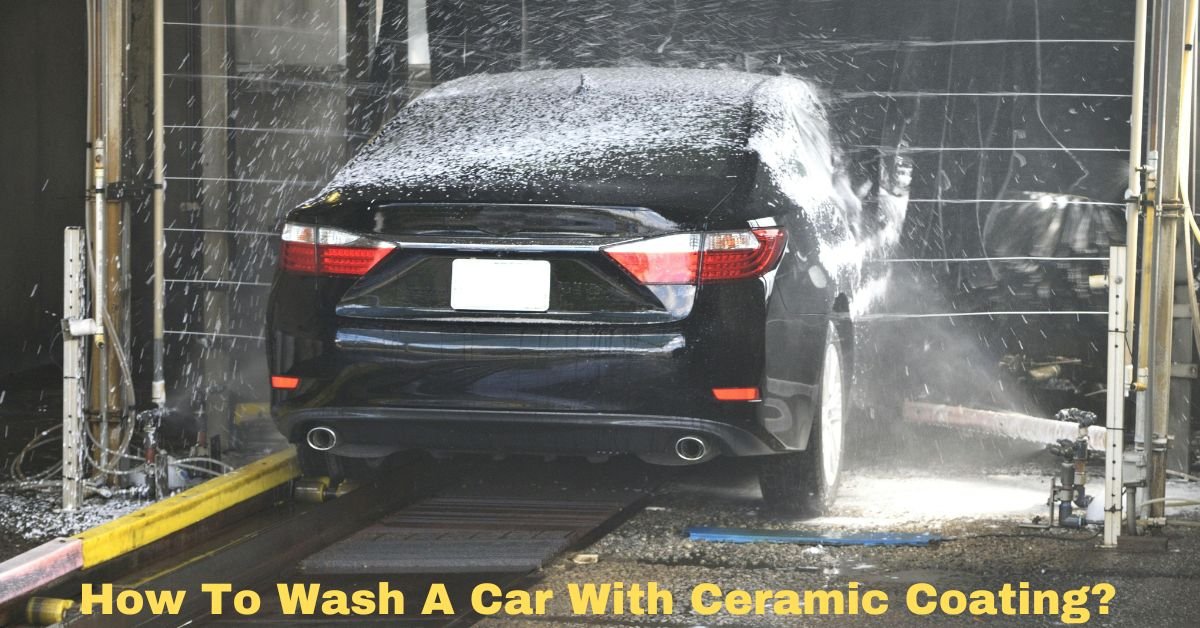When you invest in a ceramic coating for your car, you are ensuring a layer of protection against dirt, water, scratches, and contaminants that could damage the paint. However, a ceramic coating requires special care to maintain its effectiveness. Washing a car with ceramic coating is different from washing a regular vehicle, and doing it correctly can help preserve that glossy finish and protective barrier.
Here’s a step-by-step guide on how to wash your car with ceramic coating the right way.
How to Wash a Car with Ceramic Coating: A Step-by-Step Guide
1. Understand the Ceramic Coating Benefits
Before jumping into the cleaning process, it’s important to understand the advantages of ceramic coating. Ceramic coatings create a hydrophobic surface, meaning water beads up and rolls off the surface, taking dirt and grime with it. They also make the paint more resistant to scratches, chemical stains, and UV damage.
While the coating significantly reduces the amount of maintenance, it’s essential to clean your car carefully to avoid damaging the protective layer. The right techniques will ensure that the coating lasts longer and continues to provide maximum protection.
2. Gather the Right Supplies
To wash a car with ceramic coating, you need specific tools and products that are gentle on the coating. Here’s what you should gather:
- Two-bucket system: One for soapy water, one for rinsing your wash mitt. This prevents dirt from being transferred back to the car’s surface.
- pH-balanced car shampoo: Avoid using harsh detergents that can strip the ceramic coating. Opt for a gentle, pH-balanced car wash soap.
- Microfiber wash mitt: Soft microfiber mitts are less abrasive and safer for the coating than sponges or cloths.
- Microfiber towels: These are crucial for drying your car without leaving streaks or scratches.
- Pressure washer or hose with a nozzle: A pressure washer is ideal, but a garden hose can work as well for rinsing.
- Grit guards: These are placed in the bottom of each bucket to trap dirt, preventing it from reattaching to your mitt.
- Ceramic coating maintenance spray (optional): Some people like to apply a ceramic coating maintenance spray after washing to enhance the hydrophobic effect and keep the surface slick.
3. Pre-Rinse the Vehicle
To start, rinse your automobile beforehand to get rid of any loose dirt or debris. If you’re using a pressure washer, this step is quick and effective. The goal is to minimize the risk of dirt scratching the coating as you wash.
Pay close attention to areas where dirt and grime accumulate, such as the wheel wells, tires, and lower parts of the vehicle. Don’t forget to rinse the roof, hood, and trunk to get rid of any contaminants.
4. Use the Two-Bucket Wash Method
Now that the car is wet, it’s time to wash it using the two-bucket method. This helps reduce the risk of transferring dirt back onto your car’s surface, which could lead to scratches.
- Fill one bucket with water and your pH-balanced car shampoo.
- Fill the second bucket with clean water to rinse your wash mitt.
- Starting from the top of the vehicle, use the microfiber mitt to gently wash the surface in straight lines. Do not use circular motions, as this can cause swirl marks.
- Rinse the mitt in the clean water bucket before dipping it into the soapy water again to wash another section. Repeat until the entire car is clean.
Remember, patience is key! Don’t rush through this process, as washing your car carefully ensures a streak-free finish.
Must Read: How To Remove Vinyl Wrap From Car?

5. Rinse and Dry Properly
After washing the car, rinse it off completely. Ensure that all soap is removed to avoid any residue that can affect the finish. A pressure washer or high-pressure nozzle can help remove the remaining suds from hard-to-reach areas.
Dry the car immediately using a clean, soft microfiber towel. Gently blot the surface to absorb the water and avoid causing any scratches. It’s best to dry the car quickly to prevent water spots, as ceramic coatings make it easier for water to bead up and run off, but water can still leave residue if it’s left to dry naturally.
6. Inspect for Contaminants
Once your car is dry, take a step back and inspect it for any remaining contaminants. Even with a ceramic coating, particles like tree sap, bird droppings, or road tar may stick to the surface. If you notice any, you can use a clay bar to gently remove these impurities without damaging the coating.
A clay bar works by picking up contaminants from the surface of the paint, leaving it smooth and free from any particles that could damage the coating over time. Remember to lubricate the surface well with a clay lubricant before using the bar to avoid scratching.
7. Optional: Apply Ceramic Coating Maintenance Spray
While ceramic coatings are durable, applying a maintenance spray after washing can further enhance the hydrophobic properties of the coating and keep your car looking shiny and clean for longer. This step is optional but recommended for those who want to keep their car’s finish in top condition.
8. Final Thoughts
Washing a car with ceramic coating doesn’t have to be complicated. In fact, the coating makes cleaning your car easier and helps preserve its value. By using the right products and techniques, you can ensure that your ceramic-coated car stays protected, clean, and shiny for years to come.
Regular washing, careful drying, and using the appropriate cleaning products will keep your ceramic coating in top shape. A little effort in proper maintenance goes a long way in making sure your car remains as stunning as the day it was coated.
